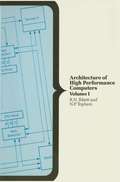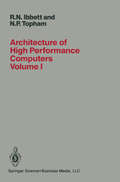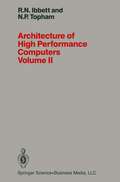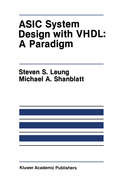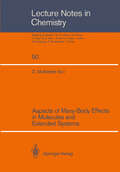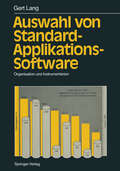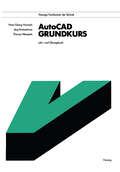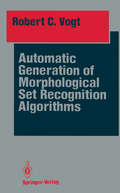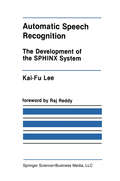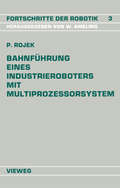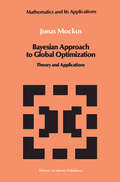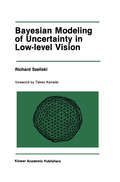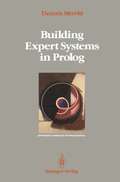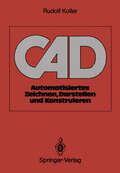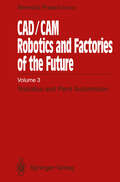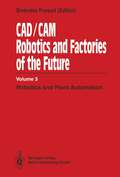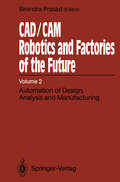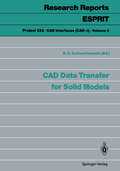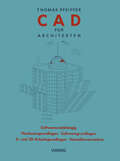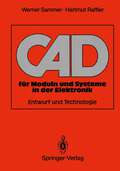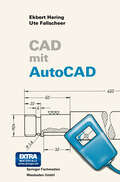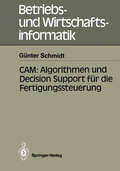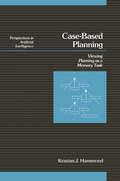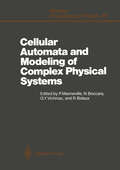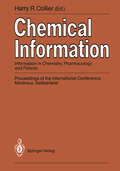- Table View
- List View
Architecture of High Performance Computers: Volume I: Uniprocessors and Vector Processors (Computer Science Series)
by Roland N. Ibbett Nigel P. TophamThis second edition is presented as two volumes. Subtitled Uniprocessors and Vector Processors, Volume I is a revised and expanded version of the first edition; it deals mainly with the techniques used in uniprocessor architectures to attain high performance.
Architecture of High Performance Computers (pdf): Volume I Uniprocessors and vector processors
by R. IbbettArchitecture of High Performance Computers Volume II (pdf): Array processors and multiprocessor systems
by R. IbbettASIC System Design with VHDL: A Paradigm (The Springer International Series in Engineering and Computer Science #75)
by Steven S. Leung Michael A. ShanblattBeginning in the mid 1980's, VLSI technology had begun to advance in two directions. Pushing the limit of integration, ULSI (Ultra Large Scale Integration) represents the frontier of the semiconductor processing technology in the campaign to conquer the submicron realm. The application of ULSI, however, is at present largely confined in the area of memory designs, and as such, its impact on traditional, microprocessor-based system design is modest. If advancement in this direction is merely a natural extrapolation from the previous integration generations, then the rise of ASIC (Application-Specific Integrated Circuit) is an unequivocal signal that a directional change in the discipline of system design is in effect. In contrast to ULSI, ASIC employs only well proven technology, and hence is usually at least one generation behind the most advanced processing technology. In spite of this apparent disadvantage, ASIC has become the mainstream of VLSI design and the technology base of numerous entrepreneurial opportunities ranging from PC clones to supercomputers. Unlike ULSI whose complexity can be hidden inside a memory chip or a standard component and thus can be accommodated by traditional system design methods, ASIC requires system designers to master a much larger body of knowledge spanning from processing technology and circuit techniques to architecture principles and algorithm characteristics. Integrating knowledge in these various areas has become the precondition for integrating devices and functions into an ASIC chip in a market-oriented environment. But knowledge is of two kinds.
Aspects of Many-Body Effects in Molecules and Extended Systems: Proceedings of the Workshop-Cum-Symposium Held in Calcutta, February 1–10, 1988 (Lecture Notes in Chemistry #50)
by Debashis MukherjeeThis volume features invited lectures presented in the workshop-cum-symposium on aspects of many-body effects in molecules and extended systems, Calcutta, February 1 - 10, 1988. The organizers invited leading experts to present recent developments of many-body methods as applied to molecules and condensed systems. The panorama portrayed is quite broad, but by no means exhaustive. The emphasis is undoubtedly on a "molecular point of view".
Auswahl von Standard-Applikations-Software: Organisation und Instrumentarien
by Gert LangDas vorliegende Buch ist ein Wegweiser zur Auswahl von Standard-Applikations-Software. Ausgehend von ersten Überlegungen zum Einsatz von Standard-Software bis zur konkreten Entscheidung für ein Standard-Software-Produkt, erhält der Leser für alle Phasen dieses Auswahl- und Entscheidungsprozesses wichtige Orientierungshilfen, konkrete Werkzeuge und praktische Fallbeispiele an die Hand. Die vorgestellten Werkzeuge, wie z.B. die "Standardstrukturpläne", wurden in einem komplexen Projekt zur Software-Auswahl in einem Großunternehmen des Maschinen- bzw. Fahrzeugbaus entwickelt, da geeignete Instrumentarien für diese Aufgabe bisher nicht am Markt verfügbar sind. Die Lektüre des Fachbuches bringt für das Management das notwendige Verständnis für die Problematik eines solchen Projektes und für die mit der Durchführung des Projektes Beauftragten das Rüstzeug für eine konsequente wirtschaftliche und reproduzierbare Software-Auswahl. Die Software-Auswahl wird nicht als isolierte Aufgabe beschrieben, sondern eingebettet in den Rahmen Informationslogistik/CIM/Organisationsentwicklung; das Buch ist deshalb auch für Beratungsunternehmen, Software-Häuser und betriebswirtschaftliche Praktiker sowie Studenten interessant.
Automatic Generation of Morphological Set Recognition Algorithms (Springer Series in Perception Engineering)
by Robert C. VogtSince the early days of computers, machine learning and automatic programming have attracted researchers in computer science and related fields, particularly pattern recognition and automatic control theory. Most of the learning concepts in machine perception have been inspired by pattern recognition approaches that rely on statistical techniques. These statistical techniques have applicability in limited recognition tasks. Automatic programming in perception systems has generally been limited to interfaces that allow easy specification of the task using natural language. Clearly, machine learning and automatic programming can make percep tion systems powerful and easy to use. Vogt's book addresses both these tasks in the context of machine vision. He uses morphological operations to implement his approach which was developed for solving the figure-ground problem in images. His system selects the correct se quence of operators to accept or reject pixels for fmding objects in an image. The sequence of operators is selected after a user specifies what the correct objects are. On the surface it may appear that the problem solved by the system is not very interesting, however, the contribution ofVogt' s work should not be judged by the images that the system can segment. Its real contribution is in demonstrat ing, possibly for'the frrst time, that automatic programming is possible in computer vision systems. The selection of morphological operators demonstrates that to implement an automatic programming-based approach, operators whose behavior is clearly defined in the image space are required.
Automatic Speech Recognition: The Development of the SPHINX System (The Springer International Series in Engineering and Computer Science #62)
by Kai-Fu LeeSpeech Recognition has a long history of being one of the difficult problems in Artificial Intelligence and Computer Science. As one goes from problem solving tasks such as puzzles and chess to perceptual tasks such as speech and vision, the problem characteristics change dramatically: knowledge poor to knowledge rich; low data rates to high data rates; slow response time (minutes to hours) to instantaneous response time. These characteristics taken together increase the computational complexity of the problem by several orders of magnitude. Further, speech provides a challenging task domain which embodies many of the requirements of intelligent behavior: operate in real time; exploit vast amounts of knowledge, tolerate errorful, unexpected unknown input; use symbols and abstractions; communicate in natural language and learn from the environment. Voice input to computers offers a number of advantages. It provides a natural, fast, hands free, eyes free, location free input medium. However, there are many as yet unsolved problems that prevent routine use of speech as an input device by non-experts. These include cost, real time response, speaker independence, robustness to variations such as noise, microphone, speech rate and loudness, and the ability to handle non-grammatical speech. Satisfactory solutions to each of these problems can be expected within the next decade. Recognition of unrestricted spontaneous continuous speech appears unsolvable at present. However, by the addition of simple constraints, such as clarification dialog to resolve ambiguity, we believe it will be possible to develop systems capable of accepting very large vocabulary continuous speechdictation.
Bahnführung Eines Industrieroboters mit Multiprozessorsystem (Fortschritte der Robotik)
by Peter RojekBayesian Approach to Global Optimization: Theory and Applications (Mathematics and its Applications #37)
by Jonas MockusBayesian Modeling of Uncertainty in Low-Level Vision (The Springer International Series in Engineering and Computer Science #79)
by Richard SzeliskiVision has to deal with uncertainty. The sensors are noisy, the prior knowledge is uncertain or inaccurate, and the problems of recovering scene information from images are often ill-posed or underconstrained. This research monograph, which is based on Richard Szeliski's Ph.D. dissertation at Carnegie Mellon University, presents a Bayesian model for representing and processing uncertainty in low level vision. Recently, probabilistic models have been proposed and used in vision. Sze liski's method has a few distinguishing features that make this monograph im portant and attractive. First, he presents a systematic Bayesian probabilistic estimation framework in which we can define and compute the prior model, the sensor model, and the posterior model. Second, his method represents and computes explicitly not only the best estimates but also the level of uncertainty of those estimates using second order statistics, i.e., the variance and covariance. Third, the algorithms developed are computationally tractable for dense fields, such as depth maps constructed from stereo or range finder data, rather than just sparse data sets. Finally, Szeliski demonstrates successful applications of the method to several real world problems, including the generation of fractal surfaces, motion estimation without correspondence using sparse range data, and incremental depth from motion.
Building Expert Systems in Prolog (Springer Compass International)
by Dennis MerrittWhen I compare the books on expert systems in my library with the production expert systems I know of, I note that there are few good books on building expert systems in Prolog. Of course, the set of actual production systems is a little small for a valid statistical sample, at least at the time and place of this writing - here in Gennany, and in the first days of 1989. But there are at least some systems I have seen running in real life commercial and industrial environments, and not only at trade shows. I can observe the most impressive one in my immediate neighborhood. It is installed in the Telephone Shop of the Gennan Federal PTT near the Munich National Theater, and helps configure telephone systems and small PBXs for mostly private customers. It has a neat, graphical interface, and constructs and prices an individual telephone installation interactively before the very eyes of the customer. The hidden features of the system are even more impressive. It is part of an expert system network with a distributed knowledge base that will grow to about 150 installations in every Telephone Shop throughout Gennany. Each of them can be updated individually overnight via Teletex to present special offers or to adapt the selection process to the hardware supplies currently available at the local ware houses.
CAD/CAM Robotics and Factories of the Future: Volume III: Robotics and Plant Automation
by Birendra PrasadThe complete shop floor automation - a "lights out factory", where workers initially set up all machines, turn off the lights, lock the door and the machine churns up the parts - remains an unfulfilled dream. Yet when we look at the enormity of the process of automation and integration even for the most simply conceived part factory, we can recognize that automation has been applied and is being applied, more so when it made sense from a cost/benefit standpoint. It is our nature to be dissatisfied with near term progress, but when we realize how short a time the tools to do that automation have been available, the progress is clearly noteworthy - considering the multitudes of factors and the environment we have to deal with. Most of the automa tion problems we confront in today's environment are multidisciplinary in nature. They require not just the knowledge and experience in various distinct fields but good cooperation from different disci plined organizations to adequately comprehend and solve such problems. In Volume III we have many examples that reflect the current state of the art techniques of robotics and plant automation. The papers for Volume III have been arranged in a logical order of automation planning, automated assembly, robot programming and simula tion, control, motion coordination, communication and networking to factories of the future.
CAD/CAM Robotics and Factories of the Future: Volume III: Robotics and Plant Automation
by Birendra Prasad S. N. Dwivedi R. MahajanCAD/CAM Robotics and Factories of the Future: Volume II: Automation of Design, Analysis and Manufacturing
by Birendra PrasadThis volume is about automation - automation in design, automation in manufacturing, and automation in production. Automation is essen tial for increased productivity of quality products at reduced costs. That even partial or piecemeal automation of a production facility can deliver dramatic improvements in productivity has been amply demon strated in many a real-life situation. Hence, currently, great ef forts are being devoted to research and development of general as well special methodologies of and tools for automation. This volume re ports on some of these methodologies and tools. In general terms, methodologies for automation can be divided into two groups. There are situations where a process, whether open-loop or closed-loop, is fairly clearly understood. In such a situation, it is possible to create a mathematical model and to prescribe a mathe matical procedure to optimize the output. If such mathematical models and procedures are computationally tractable, we call the correspond ing automation - algorithmic or parametric programming. There is, however, a second set of situations which include process es that are not well understood and the available mathematical models are only approximate and discrete. While there are others for which mathematical procedures are so complex and disjoint that they are computationally intractable. These are the situations for which heuristics are quite suitable for automation. We choose to call such automation, knowledge-based automation or heuristic programming.
CAD Data Transfer for Solid Models (Research Reports Esprit #3)
by E. G. SchlechtendahlPrincipal authors: U. Kroszynski, B. Palstr9Sm 1.1 The evolution of concepts and specifications for CAD data exchange The CAD/CAM community has witnessed, during the last decade, the appearance of several specifications as well as proposals for standards which either attempt to cover wider areas or to be more reliable and stable than the others. With the rapid evolution of both hardware and software, the capabilities offered by CAD systems and CAD based application systems are far more advanced than they were only ten years ago, even when they are now based on micro-computers or personal comput ers. The situation with standards, however, is not and cannot be so. In order to be reliable and accepted by a wide community of both vendors and users, a standard has to be sta ble. This implies a life span of at least a decade. This also implies that the standard has to be general and flexible enough to accommodate present as well as expected future developments. 1.1.1 IGES The initial development of concepts for CAD data exchange is strongly influenced by the US Integrated Computer Aided Manufacturing (ICAM) programme, that dealt with the development of methods for data exchange. In September 1979, a subgroup was estab lished with participation of the National Bureau of Standards, the General Electric Com pany, and the Boeing Company. The result of this effort was the Initial Graphics Exchange Specification (IGES) that was published as a NBS report [61] in 1980.
CAD für Architekten: Hardwaregrundlagen, Softwaregrundlagen, 2 D-Arbeitstechniken, 3 D-Arbeitstechniken, CAD-Übungen
by Thomas PfeifferCAD für Moduln und Systeme in der Elektronik: Entwurf und Technologie
by Werner Sammer Hartmut RafflerDie hohe Komplexität elektronischer Moduln und Systeme, aber auch die immer kürzer werdenden Innovationszyklen machen den Einsatz rechnerunterstützter Entwurfsverfahren (CAD) unentbehrlich. Lagen die Entwicklungsschwerpunkte in früheren Jahren noch in der Technologie und in der Fertigung elektronischer Komponenten, so rücken heute die Entwurfsmethoden und -verfahren mit in den Vordergrund. Dies liegt auch darin begründet, daß die Wertschöpfung primär in der Verwendung elektronischer Komponenten geschieht. Gerade für die Erschließung neuer Anwendungen darf der Entwurf von elektronischen Moduln und Systemen nicht nur den auf dem Gebiet der Elektronik spezialisierten Ingenieuren vorbehalten bleiben. Ingenieure jeder Disziplin müssen durch entsprechende Entwurfssysteme in die Lage versetzt werden, elektronische Komponenten für ihren Anwendungsbereich entwickeln zu können. Diese Entwurfssysteme müssen den Anwender durch problemorientierte Darstellungsmittel, leistungsfähige Design- und Verifikationswerkzeuge und durch Werkzeuge zur Generierung von Schnittstellen zum Produktionsprozeß und zum Prüffeld unterstützen. Ziel dieses Buches ist es, einerseits Prinzipien, Methoden und Werkzeuge, die einem CAD-System für elektronische Moduln und Systeme zugrundeliegen, aufzuzeigen, andererseits aber auch Entwurfsverfahren zu diskutieren.
CAD mit AutoCAD: Eine umfassende Einführung für alle AutoCAD-Versionen einschließlich 9.0
by Ekbert HeringCAM: Algorithmen und Decision Support für die Fertigungssteuerung (Betriebs- und Wirtschaftsinformatik #36)
by Günter SchmidtFertigungsautomatisierung und die Realisierung fortgeschrittener Informationsverarbeitung sind wesentliche Voraussetzungen, um den Marktanforderungen für die Auftrags- und Kleinserienfertigung gerecht zu werden. Flexible Fertigungssysteme und CIM sind eine Antwort auf diese technologischen Herausforderungen. Intelligente Planungs- und Steuerungssysteme, eingebettet in das CIM-Konzept, zielen auf eine effiziente Nutzung der Möglichkeiten der flexiblen Automatisierung. Das vorliegende Buch gibt einen umfassenden Überblick über die in diesem Umfeld auftretenden Probleme und entsprechende Lösungsmöglichkeiten. Das Spektrum der dabei eingesetzten Werkzeuge reicht von der kombinatorischen Optimierung bis zu wissensbasierten Ansätzen. Der Leser, sei es der interessierte Praktiker, der Wissenschaftler oder der Student, findet neben einer Einführung in die methodischen Grundlagen eine Fülle von Anregungen und Beispielen für die Lösung von Planungs- und Steuerungsproblemen auf dem Hintergrund von Flexiblen Fertigungssystemen. Darüber hinaus wird ein CIM-gerechtes Leitstandsystem entworfen, das auf fortgeschrittenen konstruktiven und deskriptiven Lösungstechniken als integraler Bestandteil eines wissensbasierten Konzeptes aufbaut. Das Buch kann auf Grund seines Vorgehens und seines umfangreichen Quellenverzeichnisses sowohl als Lehrbuch wie auch als State of the Art Überblick genutzt werden.
Case-Based Planning: Viewing Planning as a Memory Task (Perspectives in Artificial Intelligence)
by Kristian J. HammondPerspectives in Artificial Intelligence, Volume 1: Case-Based Planning: Viewing Planning as a Memory Task focuses on the processes, methodologies, and techniques employed in viewing planning as a memory task. The publication first elaborates on planning and memory and learning from planning. Discussions focus on learning from cases, learning plans, learning to predict failures, case-based planning, structure of case-based planning, and learning from planning. The text then elaborates on planning from memory and planning Thematic Organization Packets (TOPs) and strategies, including TOPs in understanding and planning, TOPs and strategies, and function of memory. The manuscript takes a look at modifying and repairing plans, case-based planning, and planning and planners. Topics include CHEF as a program, case-based planning as planning and learning, noticing and explaining the failure, storing the plan, different situations for altering plans, and introduction of failure. The publication is a vital reference for researchers interested in viewing planning as a memory task.
Cellular Automata and Modeling of Complex Physical Systems: Proceedings of the Winter School, Les Houches, France, February 21–28, 1989 (Springer Proceedings in Physics #46)
by Paul Manneville Nino Boccara Gerard Y. Vichniac Roger BidauxCellular automata are fully discrete dynamical systems with dynamical variables defined at the nodes of a lattice and taking values in a finite set. Application of a local transition rule at each lattice site generates the dynamics. The interpretation of systems with a large number of degrees of freedom in terms of lattice gases has received considerable attention recently due to the many applications of this approach, e.g. for simulating fluid flows under nearly realistic conditions, for modeling complex microscopic natural phenomena such as diffusion-reaction or catalysis, and for analysis of pattern-forming systems. The discussion in this book covers aspects of cellular automata theory related to general problems of information theory and statistical physics, lattice gas theory, direct applications, problems arising in the modeling of microscopic physical processes, complex macroscopic behavior (mostly in connection with turbulence), and the design of special-purpose computers.
Chemical Information: Information in Chemistry, Pharmacology and Patents Proceedings of the International Conference, Montreux, Switzerland, September 1989
by Harry R. CollierThis volume contains the full text of twenty-six of the thirty-one papers given at the Montreux 1989 International Chemical Information Conference in Montreux, Switzerland between 26 and 28 September 1989. The five papers omitted were due to their late completion and subsequent unavailability for incorporation in this volume. Of the twenty-six papers included, all but three were delivered to Infonortics in diskette form between 1 July and 1 August 1989; by 17 August 1989 the 310 pages of text and figures were typeset and scanned graphics inserted. By 26 September 1989 all copies were printed in England and delivered to the Montreux Congress Centre in Switzerland. The rapid and efficient process reflects creditably on all parties concerned, especially on the authors who followed assiduously the detailed instructions concerning presentation they were given. Conventional publishing is not so rapid, but conventional publishing does give time for authors to proof-read their texts, make correc tions and add material, and gives time for the publisher to index the work thoroughly and completely. The current Proceedings have not been proof-read by the authors, nor is there an index. I hope that readers will appreciate this trade-off between currency and thoroughness and will recognise some of the limitations imposed by publishing proceedings at the same time the conference is held. H.R. Collier Infonortics Ltd., August 1989 Caine, Wiltshire, England v Table of Contents Chemical information as a commercial marketplace E. Garfield ..•.•.•••..........•.•...•............•.•...•.
